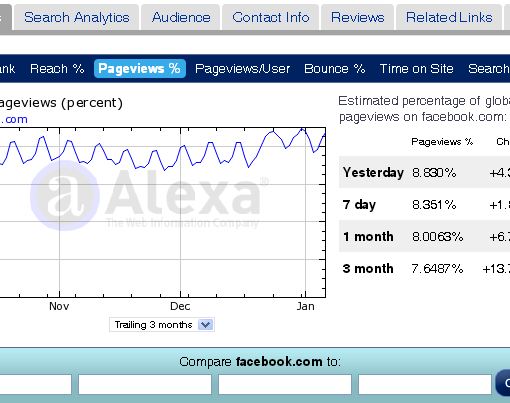 Author: Ben Dickey, BSG&L Financial Services LLC
Author: Ben Dickey, BSG&L Financial Services LLC
Covestor models: Pure Growth and Growth Plus Income
The U.S. economy grew by 2.2% during the first quarter. However, it appears that the economy is slowing going forward. Weekly unemployment claims have risen for the last few weeks.
Oil prices have remained firm, with Brent crude prices still holding an abnormal premium to WTI prices. There has been some disruption to oil shipments from some of the OPEC producers thus reducing the spare capacity left in the market.
These disruptions exacerbate the prices in the futures market. Overall, the world is using about ninety million barrels of oil per day, with a speculated spare capacity of only two millions barrels.
The first of several new pipelines from Cushing, Oklahoma to the Gulf Coast refineries will begin shipping their oil from storage in Cushing to be turned into product. This, however, will not lower WTI prices. Instead, this price will increase and begin approaching Brent prices.
The only reason there had been an abnormal price differential to Brent is that WTI is priced in Cushing. With approximately forty four million barrels of crude in storage with limited ability to ship it out, the price was being bid down. We also still import about nine million barrels per day at Brent prices which keeps our gasoline prices high.
The economy is also being buffeted by Europe. I believe that Europe has slipped into a mild recession, due in part to their austerity programs and also due to the massive amount of sovereign debt that must be rolled over in the next year or so.
There is also a growing concern that all of the liquidity that the U.S. and other central banks are creating will cause inflation sooner or later. Currency and interest rate markets are looking uneasy. The Euro is under pressure due to the opposition to the austerity programs that the European governments are trying to implement.
As I previously stated, our economy and markets should move ahead slowly, but in an ever so slight upward direction, and I still believe we will slow to a crawl in the second half of this year. We are starting to see a slowing in our economy now. Markets and economies do not like the possibility of rising taxes nor the ever increasing amount of regulations descending on businesses.
However, emerging markets continue to expand, consuming larger and larger amounts of industrial and agricultural commodities. Copper is approaching $4.00 per lb. again. The economies of the emerging market countries should continue growing at their 6% to 8% clip.
The ISM index was up again and China’s version was up as well. China sold 20 million automobiles in 2011. This growth will continue to put pressure on the oil markets. The Chinese government is investing billions of dollars in oil exporting countries to guarantee future supply.
For the first time, China now buys more oil from Saudi Arabia than the U.S. does. Many of the large US based companies that operate globally will be able to take advantage of this increased consumption demand and should grow their bottom line.
However, I do not think that all of these positive factors around the world will have a large enough impact on our economy to improve it enough to reduce the large overhang of unemployed and under-employed Americans.
The U. S. economy will not have a robust recovery until business opportunities improve sufficiently for all companies. Our economy is too large for manufacturing alone to jump start it. However, this does lead to areas that should be good investments.
There are a couple of positive factors in the U.S. economy. Major technological advances in the oil & gas industry have caused the U. S. to have an increase in oil production for the first time in over twenty years. A large percentage of the employment gains in the U.S. have been in the oil & gas industry.
The decrease in natural gas prices is lowering the cost to manufacturing companies. Utilities, where they are able, are changing from coal to natural gas for electricity production.
This should help lower utility costs, helping the U.S. economy. In addition, the increased production of natural gas liquids such as ethane, propane and butane has lowered the input costs for the chemical industry. As a result, chemical companies are moving production back to the U. S. from overseas.
This also will reduce the balance of trade deficit and add jobs. Chemical plants in the Gulf Coast are expanding capacity at strong clips. In addition, for every one million barrels per day of oil increase, our balance of trade imbalance drops by $40 billion per year.
The Keystone pipeline project would have helped our oil supply. Canada produces more oil than they need domestically so they are in need of an ability to export oil. They really only have two choices: go west to the Pacific Ocean or south to the Gulf Coast. It is easier for them to ship oil downhill from Canada to the Gulf Coast than across the Canadian Rockies.
This additional crude would have also allowed our refiners to make profits on the value added by refining the heavy crude and exporting gasoline thus adding employment and reducing our balance of trade even more.
Even without this pipeline, Kinder Morgan and Enterprise Products are expanding their current pipelines and will move more U.S. oil to our refineries, thus reducing our balance of trade cost and putting people to work. These beliefs cause us to stay with an overweighting in our basic portfolio allocations to industrial in our Growth Plus Portfolio.
We like Caterpillar (CAT), Deere & Company (DE), Honeywell International (HON), United Technologies (UTX), Emerson Electric (EMR), and Cummins (CMI) in the industrial sector. In the energy service sector we like Helmerich & Payne (HP), Cameron International (CAM), Halliburton (HAL), Mitcham Industries (MIND) and Schlumberger (SLB). Commodities and energy have changed very little.
We also continue to favor Continental Resources (CLR), Anadarko Petroleum (APC) and EOG Resources (EOG) in energy. GeoResources (GEOI) was an energy name that we held, but we have decided to sell out of it since they received a buyout offer at a price that gave us a good profit for the short time we held it.
In industrial commodities we like Peabody Energy (BTU), Freeport-McMoRan Copper & Gold (FCX), Cliffs Natural Resources (CLF), Vale S.A. (VALE), and Southern Copper (SCCO).
As I stated earlier, the pipeline companies are experiencing tremendous growth. As a result in our Growth Plus Income Portfolio we continue to like Kinder Morgan Energy Partners (KMP), Linn Energy (LINE), Enterprise Products Partners (EPD), SandRidge Mississippian Trust (SDT) and SeaDrill Limited (SDRL). These companies have good dividend rates of between 5% and 9.5%.
We are light in the technology sector, but like Amazon.com (AMZN), Apple (AAPL) and International Business Machines (IBM). We have recently added Broadcom (BRCM) and Qualcom (QCOM) to our technology holding. They are a major supplier to Apple for chips in mobile devices.
Just to restate, I believe the European debt problem and the upcoming election has us most concerned about this year. Hedging this volatility, in my opinion, will be hard. Gold last year was as volatile as the markets. Several hedge funds lost huge sums of money betting on it.
I believe copper and oil will be the inflation hedge this year. Otherwise, the only way to reduce volatility is to add some consumer staples with good dividend streams.
However, if you are a long term investor, the aforementioned sectors should allow an investor to outperform the markets with a somewhat reduced amount of volatility for the foreseeable future.



